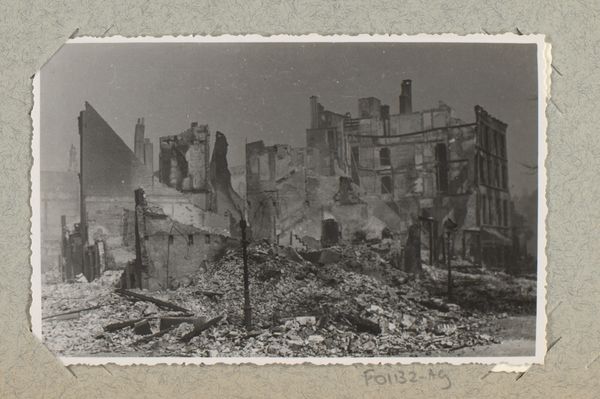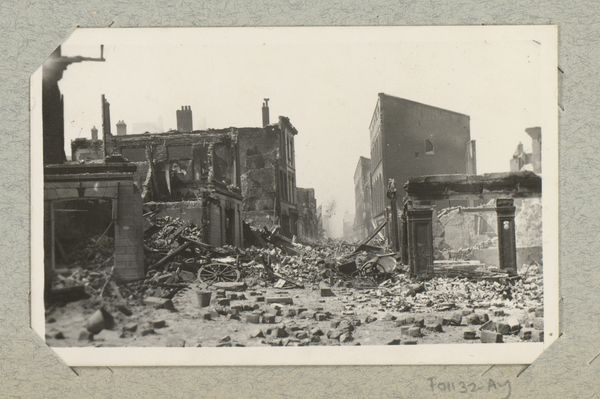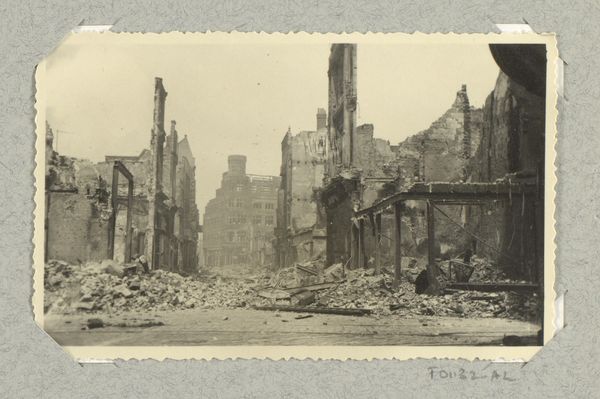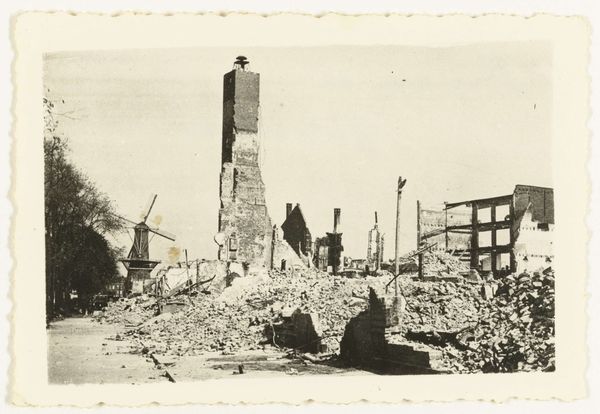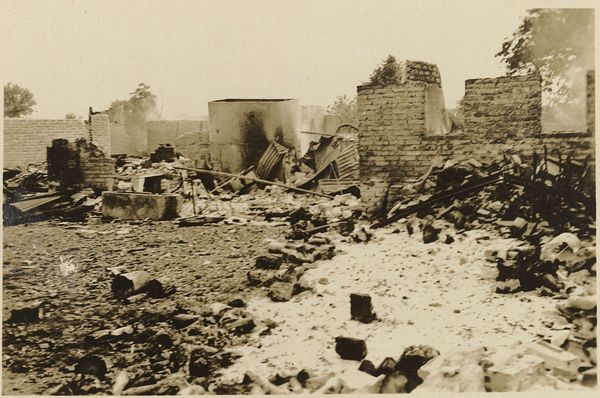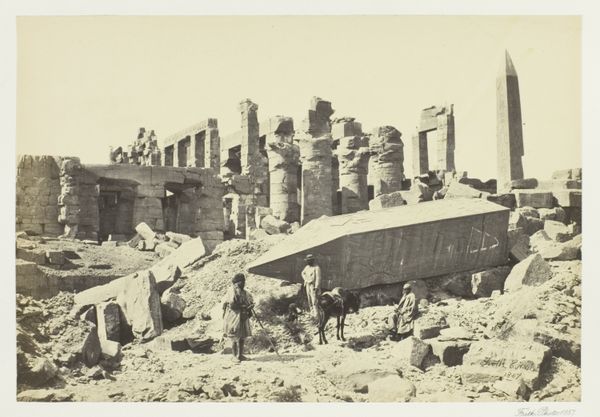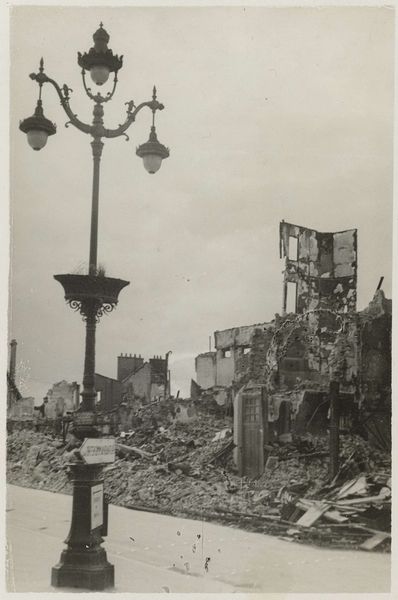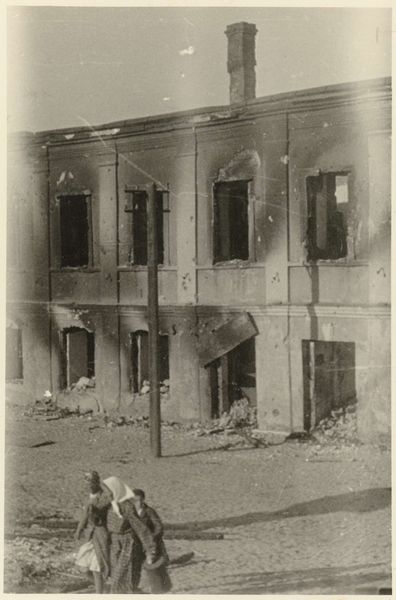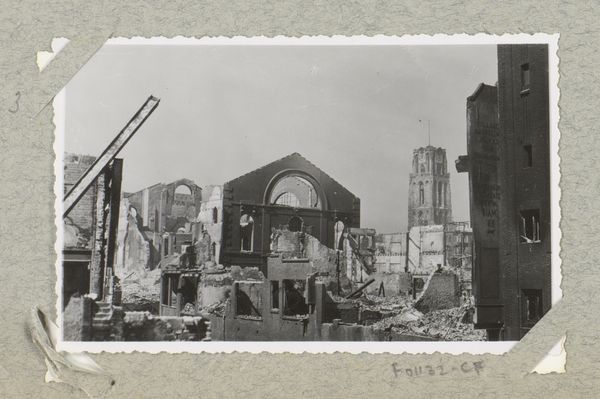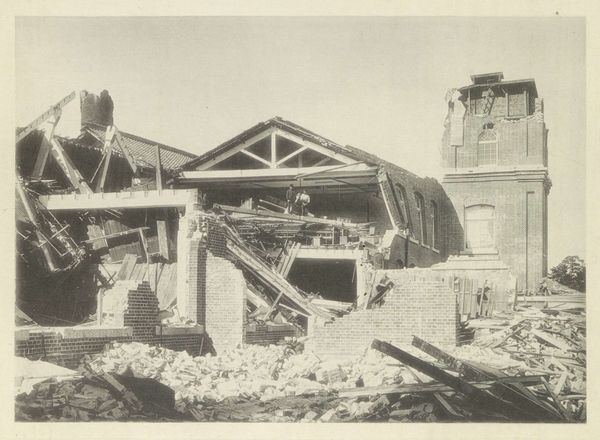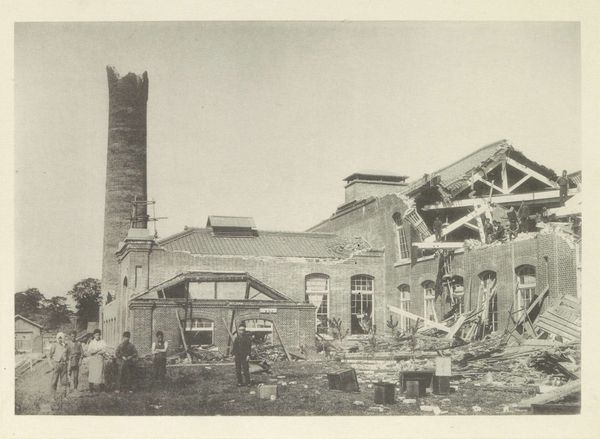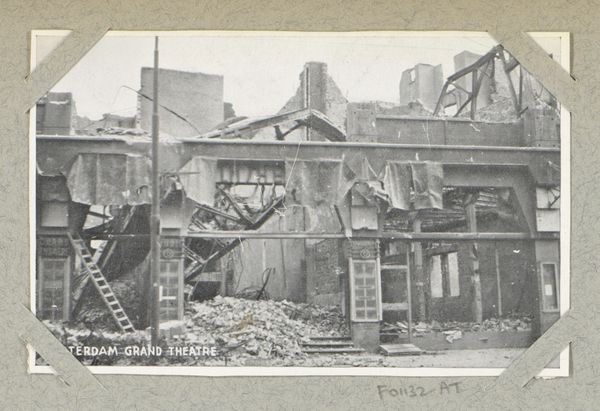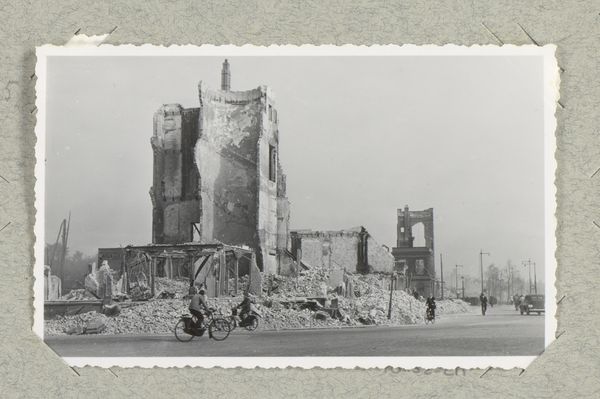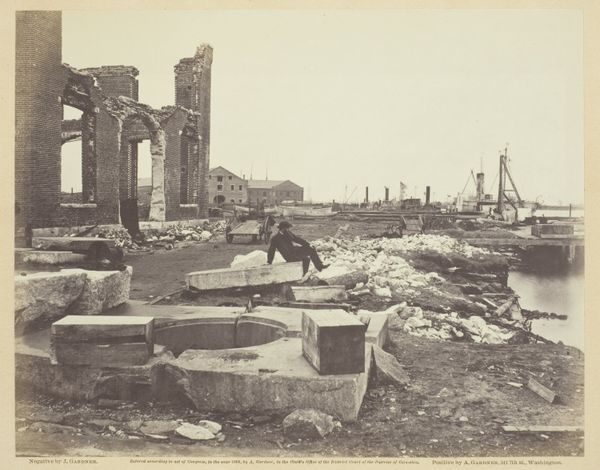
Dimensions: image: 450 x 685 mm support: 540 x 690 mm
Copyright: © Tacita Dean, courtesy Frith Street Gallery, London and Marian Goodman Gallery, New York/Paris | CC-BY-NC-ND 4.0 DEED, Photo: Tate
Editor: This is Tacita Dean’s "La Bataille d’Arras" from the Tate collection. It looks like a photogravure print. What strikes me is the layering of text over the image of destruction. What do you see in this piece? Curator: The photogravure process itself is critical here. Dean, known for her engagement with obsolete technologies, uses it to draw attention to the means of production. How does this handmade printing technique change our consumption of the image? Editor: It makes it feel more tangible, less like a fleeting image. Curator: Exactly. The labor and the materiality become visible, inviting us to consider the social context embedded in the artwork's creation and its representation of historical events. Editor: I see what you mean. It's not just about the image, but how it was made and what that process signifies. Curator: Precisely. It encourages us to think beyond the surface.
Comments
tate 8 months ago
⋮
http://www.tate.org.uk/art/artworks/dean-la-bataille-darras-p20253
Join the conversation
Join millions of artists and users on Artera today and experience the ultimate creative platform.
tate 8 months ago
⋮
La Bataille d'Arras belongs to a portfolio of twenty black and white photogravures with etching collectively entitled The Russian Ending. The portfolio was printed by Niels Borch Jensen, Copenhagen and published by Peter Blum Editions, New York in an edition of thirty-five; Tate’s copy is the fifth of ten artist’s proofs. Each image in the portfolio is derived from a postcard collected by the artist in her visits to European flea markets. Most of the images depict accidents and disasters, both man-made and natural. Superimposed on each image are white handwritten notes in the style of film directions with instructions for lighting, sound and camera movements, suggesting that the each picture is the working note for a film. The title of the series is taken from a convention in the early years of the Danish film industry when each film was produced in two versions, one with a happy ending for the American market, the other with a tragic ending for Russian audiences. Dean’s interventions encourage viewers to formulate narratives leading up to the tragic denouements in the prints, engaging and implicating the audience in the creative process.
